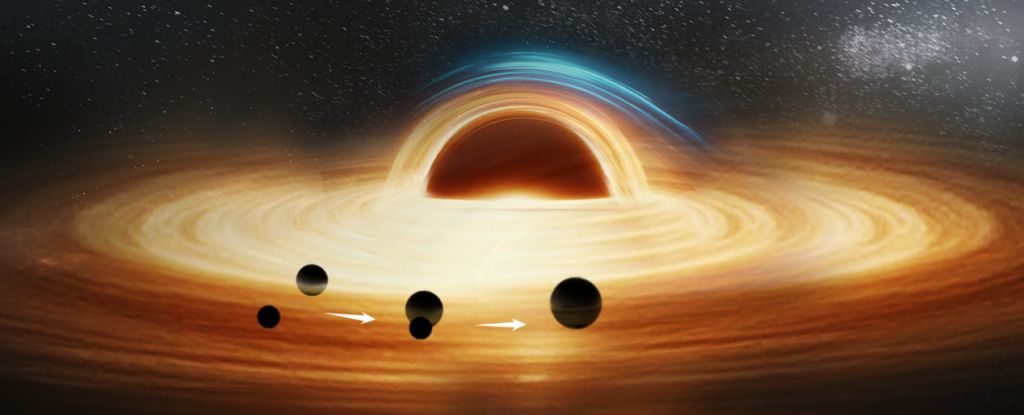A recent analysis of gravitational wave data indicates a possible first detection of a system featuring three stellar-mass black holes engaged in a complex gravitational interaction. The findings, derived from observations made by the LIGO-Virgo-KAGRA collaboration in 2019, suggest that the merger event known as GW190814 may not have involved just two black holes, but rather a third, unseen black hole exerting influence over the others.
According to Wen-Biao Han, an astronomer with the Chinese Academy of Sciences, “This is the first international discovery of clear evidence for a third compact object in a binary black hole merger event.” The implications of this discovery are profound, indicating that binary black holes could form within more intricate gravitational systems than previously understood.
Understanding the Data and Implications
Since the inception of gravitational wave detection in 2015, scientists have cataloged approximately 300 merger events. These events occur when binary black holes complete their orbital decay and collide, resulting in the emission of gravitational waves that ripple through space-time. By analyzing these signals, researchers can glean insights into the masses and characteristics of the black holes involved.
The merger event GW190814 presented a unique case, featuring a black hole that is potentially the smallest ever observed, with a mass just 2.6 times that of our Sun. In contrast, the second black hole in the pair boasts a significantly larger mass of around 23 solar masses. This stark difference in size is atypical, as stellar evolution models generally predict that binary black holes should consist of objects of comparable masses. Researchers led by Shu-Cheng Yang propose that this unusual mass ratio may suggest a complicated formation history, possibly indicating that a larger third black hole influenced the binary pair’s gravitational dynamics.
To explore this hypothesis, the team examined the gravitational wave data for signs of an additional acceleration consistent with the presence of a third black hole. Their model predicted a line-of-sight acceleration of approximately 0.0015 times the speed of light, with a confidence level of around 90 percent. This strong indication supports the theory that complex interactions could take place during black hole mergers.
Future Observations and Research Directions
The implications of this finding extend beyond the specific case of GW190814. The research adds weight to the concept of hierarchical mergers, in which black holes merge in a series of events leading to increasingly massive objects. Such scenarios could reshape our understanding of black hole formation and evolution throughout the universe.
The forthcoming observing run by the LIGO-Virgo-KAGRA gravitational wave observatories is anticipated to yield a wealth of new data regarding black hole mergers. Researchers hope this new information will not only confirm the existence of additional complex systems but also provide insights into the environments in which these mergers occur.
The findings from this research have been published in The Astrophysical Journal Letters, marking a significant step in our understanding of black holes and their intricate behaviors. As scientists continue to analyze gravitational wave data, they may uncover further hidden complexities within the universe’s most enigmatic phenomena.





























































